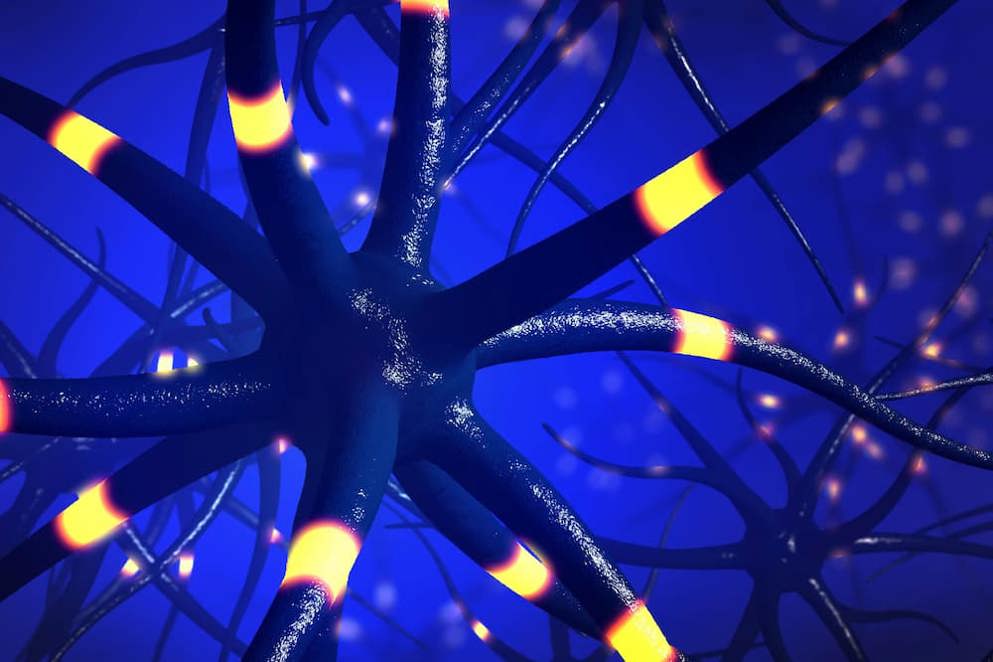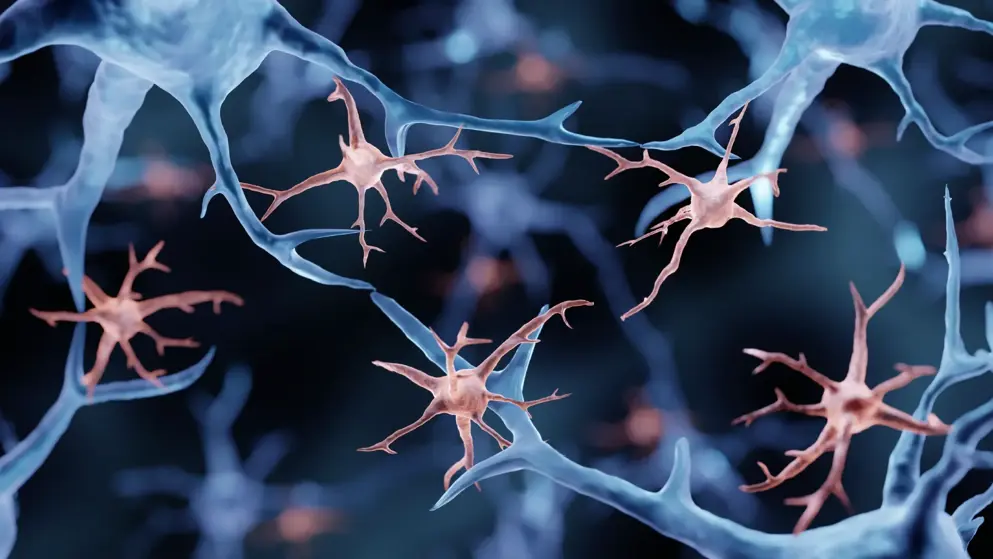
Multiple sclerosis
of interest
are looking at
saved
next event
What is multiple sclerosis?
Multiple sclerosis (MS) is an autoimmune disease affecting the central nervous system (CNS)1,2. Dysregulation of both the adaptive and innate immune systems in the periphery and CNS promotes damage to the CNS, causing myelin loss and axonal damage3.
Symptoms of MS include3:
- sensory or visual disturbances
- motor and coordination impairment
- spasticity
- fatigue
- pain
- cognitive deficits
Diagnosis of MS is based on neurological symptoms, and the presence of lesions in the CNS are usually observed using magnetic resonance imaging (MRI)4.
Descriptors of the clinical courses of MS were defined in 1996 and redefined in 2013 to include clinically isolated syndrome (CIS), relapsing–remitting MS (RRMS), secondary progressive MS (SPMS) and primary progressive MS (PPMS)5. Of people diagnosed with MS, 85–90% develop RRMS3. However, in recent years, understanding of disease progression is shifting away from viewing relapsing and progressive forms of MS as separate, distinct phenotypes and towards the idea of a single disease entity that progresses along a continuum2,6.
Who is affected by MS?
MS is a heterogenous disease that is influenced by both genetic and environmental or lifestyle factors1. Genetic factors account for approximately 30% of MS risk3. The strongest link is with the HLA-DRB1 allele3.
Environmental or lifestyle risk factors for MS include7:
- Epstein–Barr virus (EBV) infection
- smoking
- limited sun exposure and low vitamin D levels
- adolescent obesity
As of 2023, 2.9 million people are living with MS worldwide8. It is estimated that every 5 minutes, someone is diagnosed with MS9. The number of people with MS is rising, with a 30% increase in prevalence seen from 2013 to 20209.
The onset of MS usually develops between the ages of 20 and 40 years3. Females are twice as likely to develop MS than males9.
What treatments are available for MS?
In the past 30 years, there has been an increase in treatment options for MS1. Newer disease-modifying therapies (DMTs) have increased efficacy compared with traditional therapies but they also have increased side effect profiles alongside higher levels of immunosuppression1.
Therapeutic strategies with DMTs consist of escalation therapy, intensive continuous treatment or induction strategies based on risk–benefit profiles10.
Treatments available for MS include1,10:
- interferons
- glatiramer acetate
- fumarate derivatives
- sphingosine-1-phosphate (S1P) receptor modulators
- B-cell-depleting therapies
More recently, new classes of treatments are being developed with the aim of targeting inflammation in the CNS11.
Related news and insights
You may be interested in...
References
- Yang JH, Rempe T, Whitmire N, Dunn-Pirio A, Graves JS. Therapeutic advances in multiple sclerosis. Front Neurol. 2022;13:824926.
- Kuhlmann T, Moccia M, Coetzee T, Cohen JA, Correale J, Graves J, et al. Multiple sclerosis progression: time for a new mechanism-driven framework. Lancet Neurol. 2023;22(1):78-88.
- Rodríguez Murúa S, Farez MF, Quintana FJ. The immune response in multiple sclerosis. Annual Review of Pathology: Mechanisms of Disease. 2022;17(1):121-139.
- Brownlee WJ, Hardy TA, Fazekas F, Miller DH. Diagnosis of multiple sclerosis: progress and challenges. The Lancet. 2017;389(10076):1336-1346.
- Lublin FD, Reingold SC, Cohen JA, Cutter GR, Sørensen PS, Thompson AJ, et al. Defining the clinical course of multiple sclerosis: The 2013 revisions. Neurology. 2014;83:278-286.
- Giovannoni G, Popescu V, Wuerfel J, Hellwig K, Iacobaeus E, Jensen MB, et al. Smouldering multiple sclerosis: the ‘real MS’. Therapeutic Advances in Neurological Disorders. 2022;15:175628642110667.
- Alfredsson L, Olsson T. Lifestyle and environmental factors in multiple sclerosis. Cold Spring Harbor Perspectives in Medicine. 2019;9(4):a028944.
- MS International Federation, Atlas of MS. Epidemiology: Number of people with MS. https://www.atlasofms.org/map/global/epidemiology/number-of-people-with-ms. Accessed 20 July.
- Walton C, King R, Rechtman L, Kaye W, Leray E, Marrie RA, et al. Rising prevalence of multiple sclerosis worldwide: Insights from the Atlas of MS, third edition. Mult Scler. 2020;26(14):1816-1821.
- Callegari I, Derfuss T, Galli E. Update on treatment in multiple sclerosis. Presse Med. 2021;50(2):104068.
- Oh J, Bar-Or A. Emerging therapies to target CNS pathophysiology in multiple sclerosis. Nat Rev Neurol. 2022;18(8):466-475.



